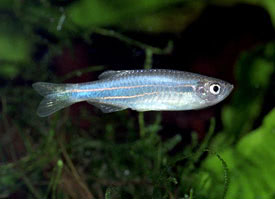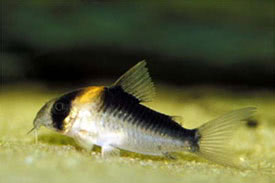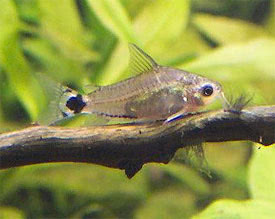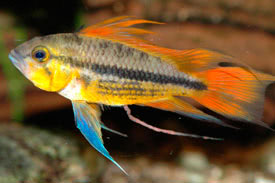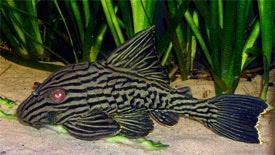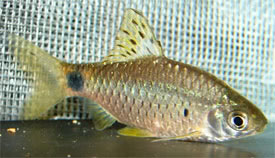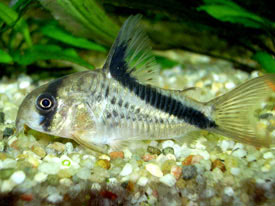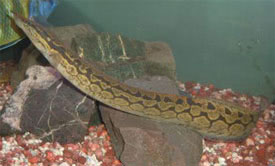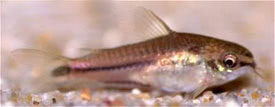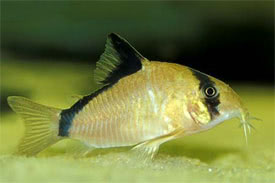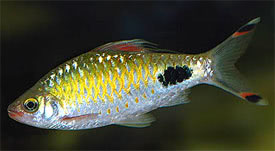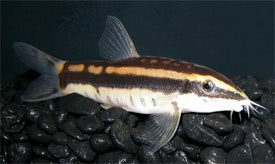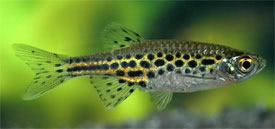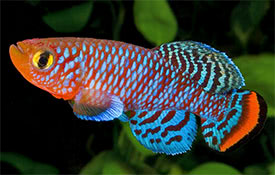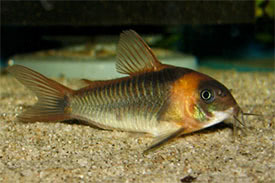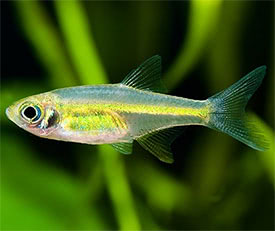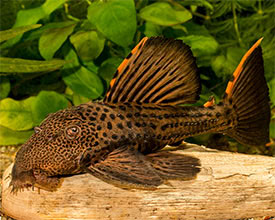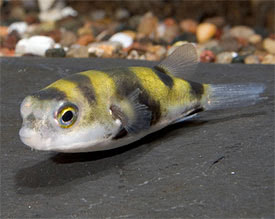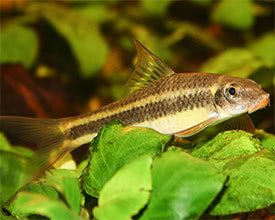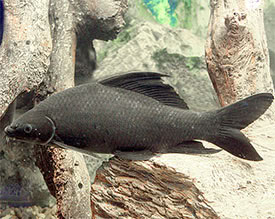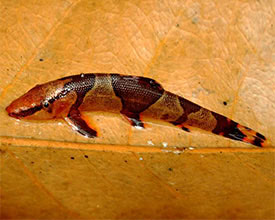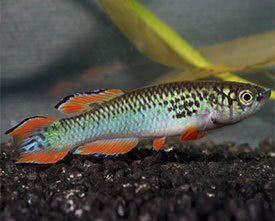
 Magyarul / Hungarian
Magyarul / Hungarian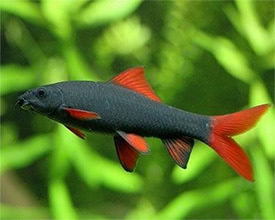
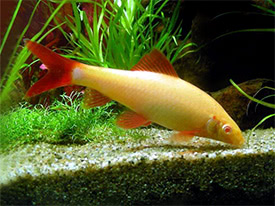
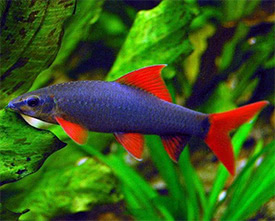
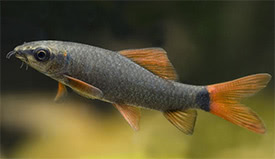

- Scientific name: Epalzeorhynchos frenatum
- Synonyms: Epalzeorhynchos frenatus (Fowler; 1934), Labeo erythrura (Fowler; 1937), Labeo frenatus (Fowler; 1934)
- Common name: Rainbow sharkminnow
- Group: Cyprinids
- Distribution: Southeast Asia; Thailand, Laos, Cambodia
- Size: 13-15 cm
- Biotope: Inhabits Mekong, Chao Phraya and Mae Klong river basins, usually over the sandy or rocky substrates. During the wet season it moves into seasonally flooded habitats.
- Social behavior: Small specimens tend to hide away, but as they grow older they become more territorial and aggressive towards conspecifics and similar-looking species. Other bottom-dwelling fishes (like cichlids and catfish) are best avoided as they may too be picked on. Choose robust and fast-swimming tankmates that dwell in the upper water levels.
- Diet: Omnivorous; Primarily an aufwuchs grazer feeding on algae, small crustaceans and insect larvae in nature, but in the aquarium it will eat all kinds of live and frozen foods along with good quality dried foods. On occasion some vegetables and chopped fruits can be offered.
- Breeding: Not possibble in aquarium
- Tank: Minimum 250 litres
- Population: 1 fish for 250 litres
- Decoration: Basically build an aquarium that designed to resemble a flowing river with river sand or small gravel substrate, and decorate the tank with larger rocks that create lots of hiding places. The aquarium can be further furnished with driftwood roots and aquarium plants which can be grown attached to the décor. They require a moderate water movement and high level of dissolved oxygen. Bright lighting will promote the growth of algae, that can be a secondary foodsource for the fish. The aquarium must have a tight cover, as they are good jumpers.
- Temperature: 20-26 °C
- pH: 6.5-8.0
- Hardness: 2.0-15.0 dGH
- Lifespan: 10-15 years
This species probably lives a solitary lifestyle in nature, and have only come into contact with others of its own kind during the spawning season, therefore it should be kept alone in the aquarium. Do not keep them with similar-looking fishes, such as Epalzeorhynchos bicolor or Labeo chrysophekadion, because they will constantly fight. An aquarium with base measurements of 120x45 cm should be the smallest considered for a single specimen, with larger quarters necessary for a group, each individual is likely to require a territory with a diameter of at least a metre. It is also often sold as an algae-eater and while it does browse on algae it does not do so with the same efficacy as some Crossocheilus species, and there is little worth in purchasing it with that purpose in mind. Rainbow sharks are good tank bottom cleaners, they consume leftover fish food, but also eat the algae growing off surfaces. They are not recommendable to the new aquarist.
Sexually mature females are noticeably fuller-bodied than males, but it is impossible to sex juveniles accurately. Males should also have a dark marginal edge on their anal fin.
Their breeding in a home aquarium is not possible, but large numbers are produced for the ornamental trade in Far Eastern fish farms with the aid of hormones. The specimens in the hobby are almost exclusively coming from these farms, wild fishes are almost certainly unavailable.
https://www.fishbase.se/summary/epalzeorhynchos-frenatum.html
https://www.seriouslyfish.com/species/epalzeorhynchos-frenatum
https://en.wikipedia.org/wiki/Rainbow_shark
http://badmanstropicalfish.com/profiles/profile85.html





















